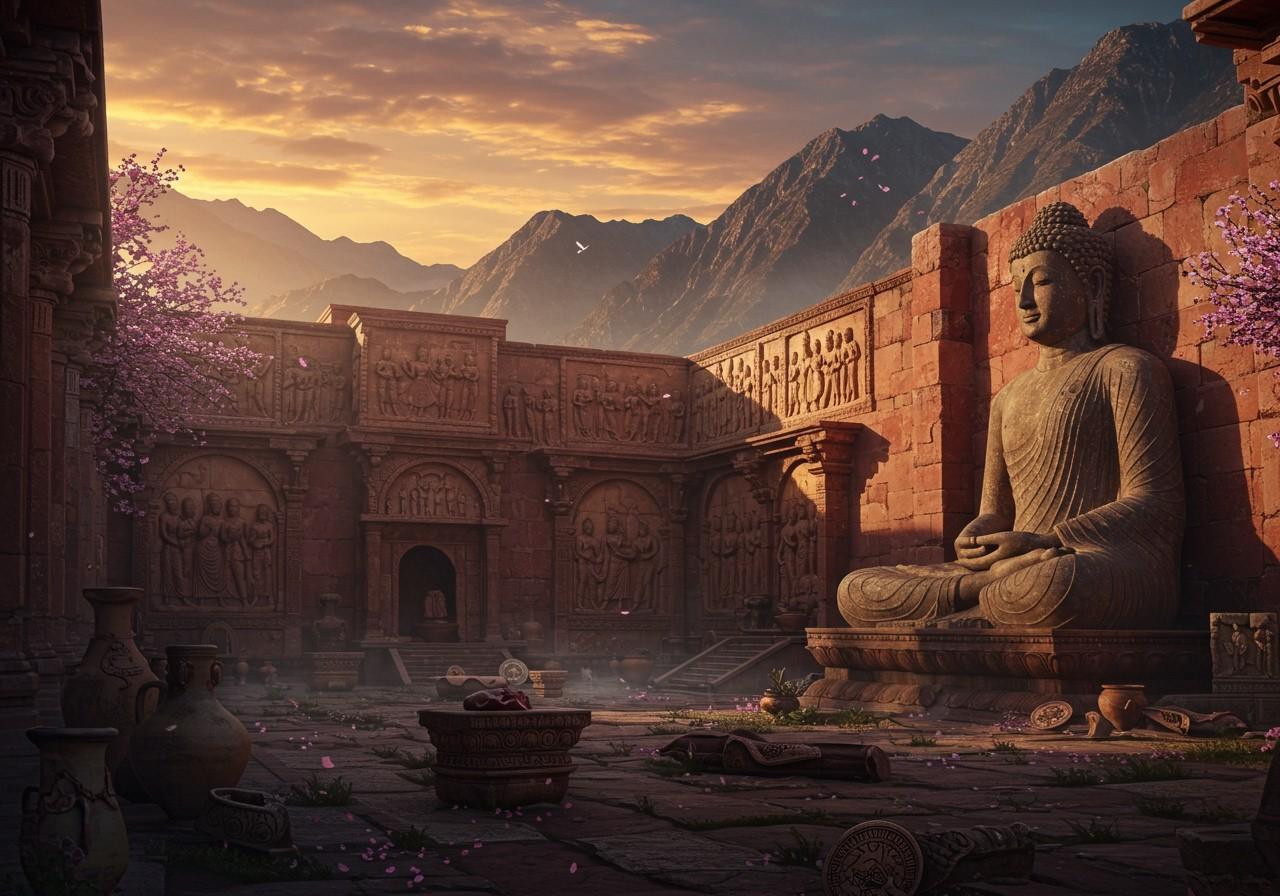
Gandhara, a historical crossroads of civilizations, beckons explorers to uncover its rich tapestry of art, culture, and spirituality. Spanning present-day Pakistan and Afghanistan, this ancient region flourished as a cradle of Buddhism and a hub of artistic innovation. This guide delves into Gandhara’s historical significance, its unique Greco-Roman influenced art, and its enduring legacy.
A Historical Tapestry
Gandhara’s history is a vibrant mosaic woven from the threads of numerous empires. From the Achaemenids to the Mauryans, Kushans, and Guptas, each dynasty left an indelible mark on the region’s cultural landscape. Gandhara’s strategic location along the Silk Road facilitated trade and cultural exchange, fostering a melting pot of influences that shaped its unique identity. The rise of Buddhism in Gandhara transformed the region into a spiritual center, with Taxila and Peshawar emerging as prominent hubs of learning and religious practice. The decline of Gandhara was a gradual process influenced by various factors including invasions and shifting political dynamics.
Geographic Location and Significance
Historically, Gandhara encompassed a vast area in the northwestern Indian subcontinent, encompassing parts of modern-day Pakistan and Afghanistan. Key cities like Taxila, Peshawar, and the Swat Valley hold immense archaeological significance, revealing remnants of Gandhara’s glorious past. These locations were strategically important along major trade routes like the Silk Road, fostering economic prosperity and cultural exchange. The region’s diverse topography, featuring both mountainous terrain and fertile river valleys, contributed to its unique character and strategic importance.
Gandhara Art and Architecture: A Fusion of Styles
Gandhara art stands as a testament to the region’s rich cultural fusion. The distinctive blend of Greco-Roman and Indian artistic traditions gave rise to a unique style characterized by intricate sculptures and reliefs, particularly depictions of the Buddha. The iconic Dharmarajika Stupa and Bhamala Stupa exemplify Gandhara’s architectural prowess, showcasing the region’s mastery of Buddhist religious architecture. The techniques and materials employed by Gandhara artists, such as stucco and schist, highlight their skill and craftsmanship.
A Cultural Legacy That Endures
Gandhara’s cultural legacy extends far beyond its geographical boundaries. The region’s significant role in the spread of Buddhism to East Asia, particularly China and Japan, is undeniable. Gandhara also played a crucial role in preserving and propagating ancient languages like Sanskrit and Pali, which were essential for transmitting Buddhist scriptures and teachings. The cultural exchanges facilitated by trade, migration, and diplomacy continue to resonate in the present day. Gandhara’s influence can be seen in contemporary cultural events and initiatives in Pakistan and Afghanistan that celebrate the region’s rich heritage.
Planning Your Gandhara Exploration
For those inspired to embark on a Gandhara adventure, careful planning is essential. Consider traveling during favorable weather conditions and research local events that might coincide with your visit. Key archaeological sites and museums, such as those in Taxila and Peshawar, offer invaluable insights into Gandhara’s history and art. Research various transportation options and choose accommodations that align with your preferences. Prioritize safety by checking travel advisories and respecting local customs and traditions.
Deepen your understanding of Gandhara by exploring books, documentaries, and online resources dedicated to the region’s rich heritage. Consider tours ranging from 7 to 10 days, starting from cities like Islamabad and covering key sites such as Taxila, Peshawar, Takht-i-Bahi, and the Swat Valley. These curated experiences offer a deep dive into Gandhara civilization.
Poojn.in: Your Companion on a Spiritual Journey
Poojn.in, India’s leading cultural goods and services store, offers a curated selection of products to enhance your connection with Gandhara’s spiritual heritage. Explore our collection of sacred texts, meditation supplies, and ritual items (https://www.poojn.in/product/10386/radha-krishna-bigraha-14-inch-approx-radha-krishana-jodi-pure-marble-finished-marble-dust-sculpture-for-worship) that resonate with the Buddhist and Hindu traditions prevalent in Gandhara. Delve deeper into the divine aspects of Gandhara with our informative guides on deities like Lord Garuda (https://www.poojn.in/post/18357/yama-god-of-death-and-dharma-a-complete-guide) and Lord Indra, who held significant importance in the region’s religious landscape.
Embrace the Enduring Legacy
Gandhara’s story is one of cultural exchange, artistic brilliance, and spiritual significance. By exploring this ancient region, we gain a deeper appreciation for the interconnectedness of civilizations and the enduring power of art and culture to transcend time and borders. Plan your journey, immerse yourself in the experience, and let Gandhara’s timeless legacy inspire you.


